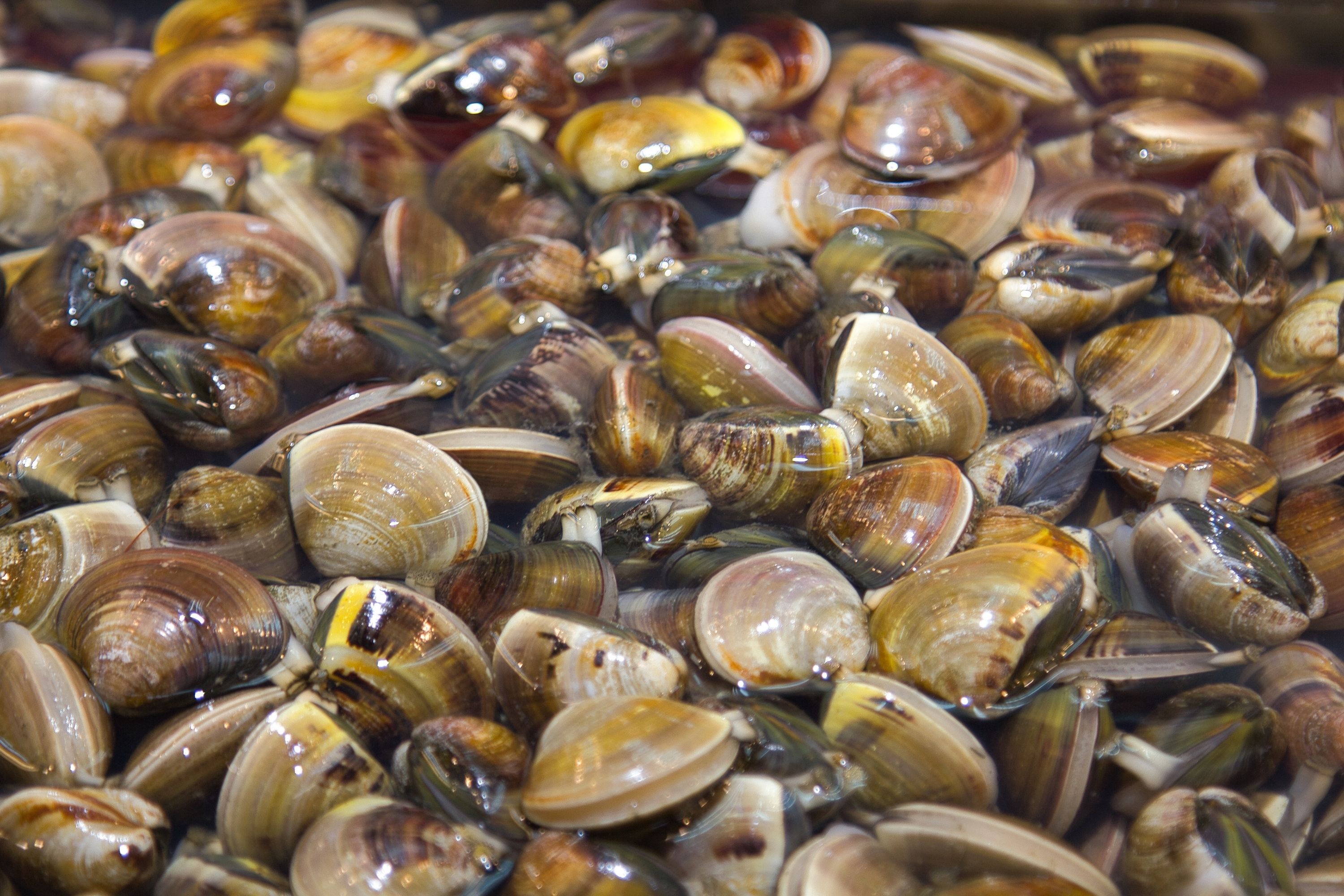Zebra mussel
(Dreissena polymorpha)

Description
The zebra mussel (Dreissena polymorpha) is a small freshwater mussel. The species was originally native to the lakes of southern Russia and Ukraine, but has been accidentally introduced to numerous other areas and has become an invasive species in many countries worldwide. Since the 1980s, the species has invaded the Great Lakes, Hudson River, and Lake Travis. The species was first described in 1769 by German zoologist Peter Simon Pallas in the Ural, Volga, and Dnieper Rivers. Zebra mussels get their name from a striped pattern commonly seen on their shells, though it is not universally present. They are usually about the size of a fingernail, but can grow to a maximum length around 2 in (5.1 cm). Shells are D-shaped, and attached to the substrate with strong byssal fibers, which come out of their umbo on the dorsal (hinged) side. Zebra mussels and the closely related and ecologically similar quagga mussels are filter-feeding organisms; they remove particles from the water column. Zebra mussels process up to one liter of water per day, per mussel. Some particles are consumed as food, and feces are deposited on the lake floor. Nonfood particles are combined with mucus and other matter and deposited on lake floors as pseudofeces. Since the zebra mussel has become established in Lake Erie, water clarity has increased from 6 inches to up to three feet in some areas. This increased water clarity allows sunlight to penetrate deeper, enabling growth of submerged macrophytes. These plants, when decaying, wash up on shorelines, fouling beaches and causing water-quality problems. Lake floor food supplies are enriched by zebra mussels as they filter pollution out of the water. This biomass becomes available to bottom-feeding species and to the fish that feed on them. The catch of yellow perch increased 5-fold after the invasion of zebra mussels into Lake St. Clair. Zebra mussels attach to most substrates, including sand, silt, and harder substrates, but usually juveniles prefer harder, rockier substrates on which to attach. Other mussel species frequently represent the most stable objects in silty substrates, and zebra mussels attach to and often kill these mussels. They build colonies on native unionid clams, reducing their ability to move, feed, and breed, eventually leading to their deaths. This has led to the near extinction of the unionid clams in Lake St. Clair and the western basin of Lake Erie.
Taxonomic tree:







